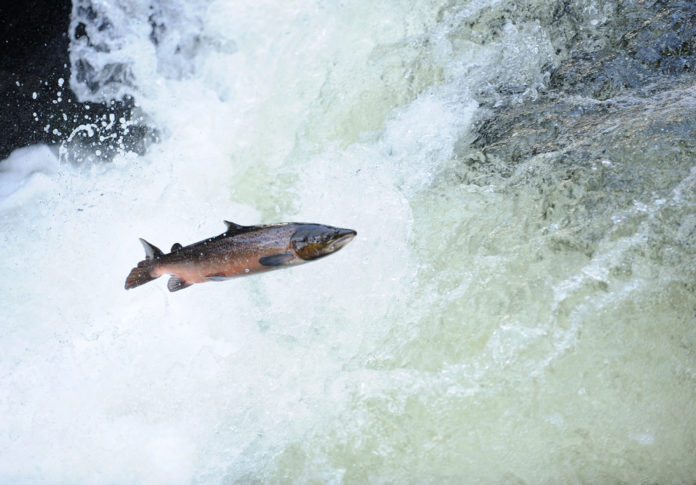The plight of the Atlantic Salmon serves as a stark reminder of the broader extinction crisis facing ecosystems globally.
Wild Atlantic salmon have been ranked as “Near Threatened,” according to the latest Red List of Threatened Species by the International Union for Conservation of Nature (IUCN), released at COP28.
The Red List, a globally recognized assessment of Earth’s plants and animals, points to a range of threats impacting freshwater fish and reflects growing concerns over the future of the fish.
The IUCN report highlights that climate change is affecting all stages of the salmon’s life cycle, reducing prey availability and encouraging invasive species. Whlle man-made obstacles such as dams are impeding migration routes to spawning and feeding grounds.
Water pollution and sedimentation, mainly from agricultural and logging activities, further exacerbate the situation.
Breeding with escaped farmed salmon is also a concern as it may threaten the fish’s ability to adapt to climate change, according to the WWF.
Claire Baffert, Senior Water Policy Officer at the WWF European Policy Office, emphasized the urgency of action to protect these fish populations.
“In Europe, we are not doing enough to protect our fishes from extinction. Unless we act now to restore our rivers, lakes and wetlands, our fish populations – including the iconic Atlantic Salmon – will be consigned to history books,” said Baffert.
“This is yet another wake-up call to our decision makers that large-scale nature restoration cannot wait any longer. To keep this extinction crisis at bay, EU institutions must adopt the long-awaited Nature Restoration Law which includes a target to restore 25,000 kilometres of free-flowing rivers – vital for salmon and other migratory fish.”
This assessment by the IUCN marks the first comprehensive evaluation of the world’s freshwater fish species. Out of 14,898 species assessed, 3,086 are at risk of extinction, underlining the critical state of freshwater biodiversity.









